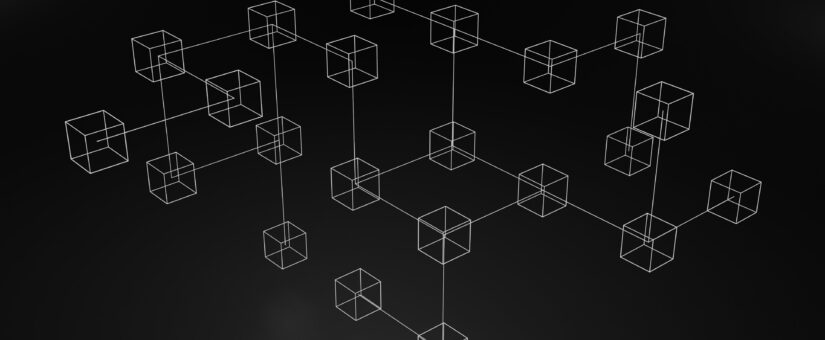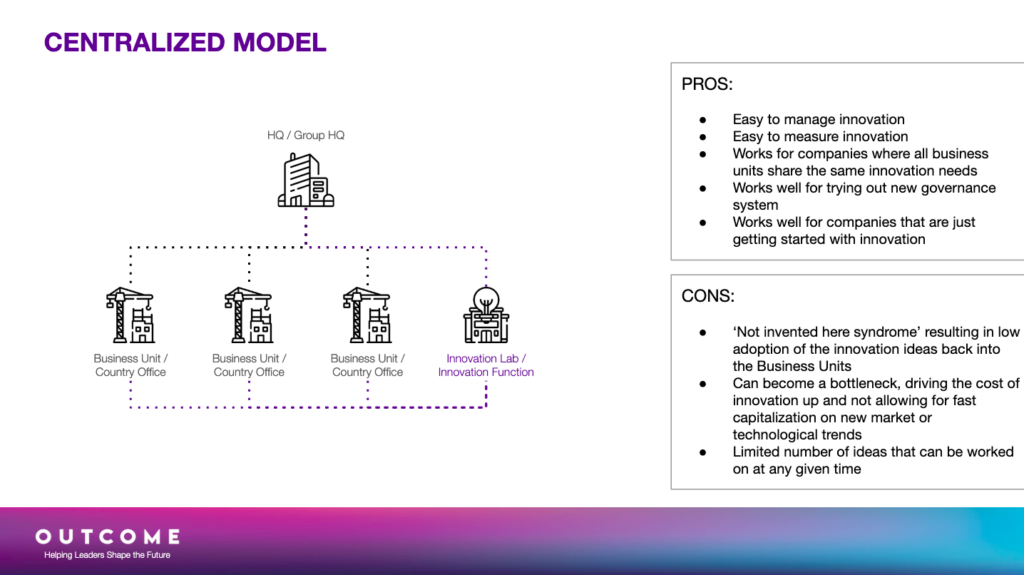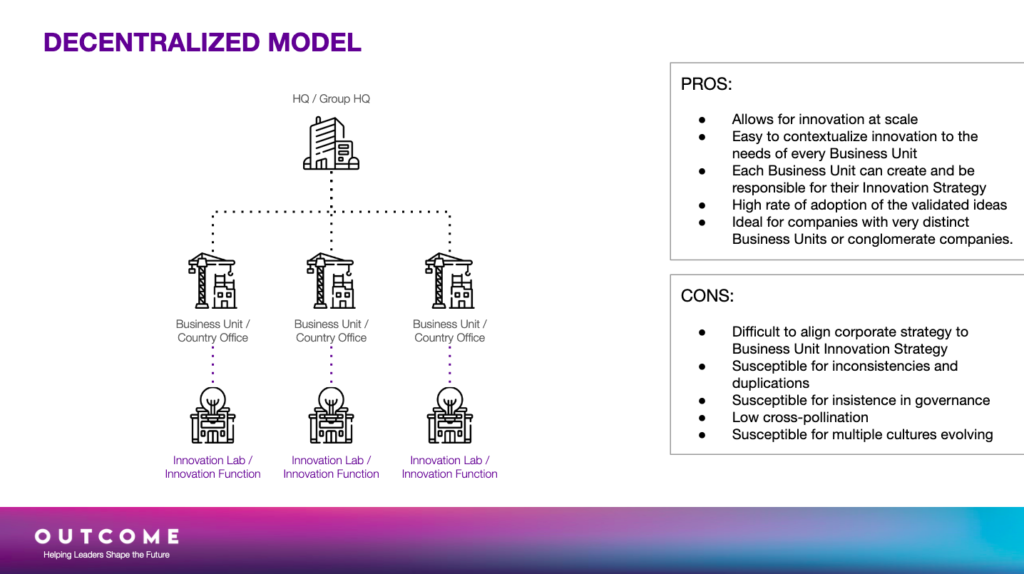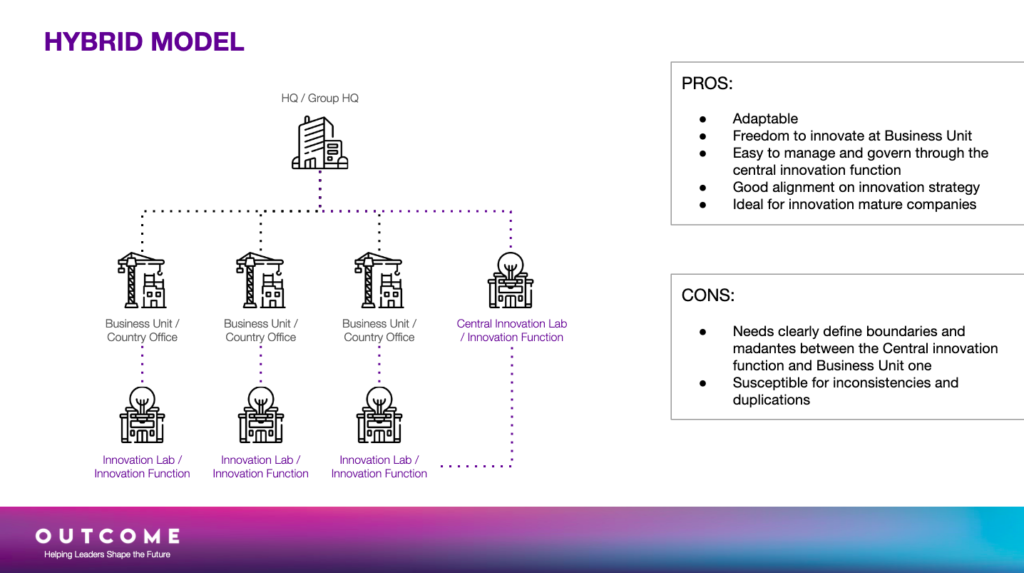
Three Organizational Designs for Innovation
- Posted by Dan Toma
- On 30/01/2023
The design/structure of an organization can help or hinder its progress toward its goals. Independent of size and industry, organizations can achieve their goals by properly matching their needs with the structure they use to operate.
Structures become even more important when dealing with innovation, as this activity differs in many ways from business-as-usual. As Peter Druker puts it: ‘Innovation is the work of knowing rather than doing.’
Innovation will always play the central role in companies’ long-term survivability. Hence the right structure can lead to sustainable growth. While at the same time, the wrong structure can transform innovation into a money pit activity. In principle there are three main types of structures for innovation:
- Centralized Innovation Structure
One of the most traditional forms of organizational structure is the centralized one. Here the innovation strategies are set at the center. Also, the resources are centralized in the innovation department.
In general, in companies with a centralized innovation unit, governing, managing and measuring innovation is easier. However, this structure can lead to bottlenecks, which in turn can drive the cost of innovation up.
Moreover under this structure, the ‘Not Invented Here Syndrome (NIHS)’ might be more prominent. Hence there will be stiffer opposition for adopting ideas back in the regular business units after they’ve been developed by the centralized innovation unit.

The organizations which will benefit the most from adopting a centralized innovation structure are the ones whose divisions have similar innovation needs (eg.: standardization), or the ones that are just getting started on the innovation journey as in this design innovation management (and changes to the innovation management system) is the easiest.
- Decentralized Innovation Structure
The polar opposite of the Centralized is the Decentralized model. It is distinctive from the previous as each business unit has full control over the innovation effort.
In this structure tasks and responsibilities are evenly distributed between the employees, which may enable open communication & collaboration.
Additionally, although management is given the freedom to “run their departments as they see fit”, they are still held accountable for their teams’ results.
Under this structure, resource allocation is done faster. And once matured the ideas will be easier to integrate with the BUs. This structure allows for innovation to happen at scale as very limited innovation resourcing (if any) is done at the center. However, in the decentralized model, alignment of each Business Unit innovation strategy with the overall corporate goal might prove difficult.

Also, consistency across Business Units in tools, approaches, methodologies and measurements might be tricky in the absence of clear governance guidelines from the center.
A decentralized structure will be the most beneficial for companies where divisions are very different. Examples of such companies include Johnson & Johnson, Illinois Tool Works and Tyco International.
- Hybrid Structure or Business Unit Enabled
A hybrid structure is a combination of both functional and divisional structures. Its diverse features allow the company to be more flexible in distributing and assigning roles. It also helps to maintain a healthy relationship across all departments. Under this structure, the corporate strategy is easier connected with the innovation strategy of each Business Unit.
For all its advantages, the Hybrid structure’s biggest pitfall is a high chance of conflicts between the Central Innovation Function and the ones in the Units. The line of authority might become vague, and dilemmas regarding deadlines and resources are prone to cause the company issues on many levels.
Another cause of concern with this model is the mandate for innovation. Which type and form of innovation needs to stay in the Business Units and which one needs to be sent off to the Central Function.

However, with strong governance and clear boundaries, the hybrid model is the most versatile, in particular for companies that are further along on their innovation journey (more innovation mature).
Also worth noting is that in the case of the hybrid model the central function should also take responsibility over the management and up-kipping of the innovation system and culture across the company, on top of working on innovation topics that concern the entire group. Of the three models, the hybrid one is the most adaptive, with business units able to opt in or out of central support. But this model has a high risk of inconsistencies and duplication.
Starbucks, GAP Inc, ING, DNB and Google are the perfect examples of organizations with a Hybrid structure. In general, this structure is most suitable when divisions have differing needs but central coordination is needed.
Every company’s innovation structure is inherently different. By cultivating innovation, businesses cultivate a unique system. So, for them to choose the most appropriate one, they have to thoroughly investigate each one of the models and decide on the most appropriate one. The decision needs to consider the company and industry peculiarities. Companies have to ensure that the chosen model aligns with their values and goals. They also have to include in the equation the individuals whose roles and dynamics influence the very innovation culture they are cultivating.
Worth also noting is that independent of the model choice you are making, the results from innovation will ultimately be dictated by the quality of your innovation governance system and less by the model itself. The model will help improve the results of the system if you have one in place but if you don’t have one you will not see any results just because you picked one model over another.


